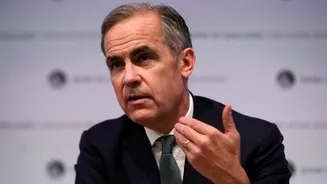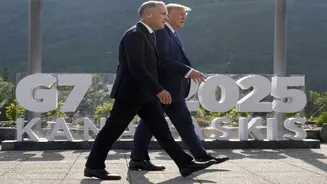Trade Relationship Evolution
The trade relationship between India and the United States has steadily evolved over the years, with each nation recognizing the other’s growing economic
importance. Initially, the trade volume was relatively modest, but it increased dramatically as both economies expanded and global trade dynamics changed. Early discussions often focused on general frameworks and identifying mutual benefits. Various initiatives and agreements have been implemented to facilitate smoother trade flows. One crucial factor driving this evolution is the shared strategic interests of both countries, which fosters greater cooperation beyond purely economic matters. The shift from a primarily agricultural trade to one that also encompasses high-tech goods, services, and digital trade is a key indicator of its progress. Now, discussions aim to remove trade barriers and create new opportunities.
Key Discussion Points
Several critical areas dominate the current India-US trade talks. Reducing tariffs and non-tariff barriers is a central focus. High tariffs can increase the cost of goods, making them less competitive in each other’s markets. The US has raised concerns about the import duties India levies on certain products. Intellectual property protection is another major topic. Protecting the intellectual property rights of American companies is important for encouraging innovation and investment in the Indian market. Issues related to market access also come up frequently. The US looks for broader access for its companies in sectors like agriculture, pharmaceuticals, and manufacturing. Furthermore, discussions involve digital trade, addressing issues like data localization and cross-border data flows. Both countries must agree on how digital services are taxed and regulated, which are becoming crucial elements of their economies. Discussions about addressing trade imbalances and ensuring fair trade practices are also part of the negotiations.
Benefits for India
India stands to gain significantly from successful trade agreements with the United States. Increased market access to the US allows Indian businesses to expand their reach and boost their exports. Sectors like textiles, pharmaceuticals, and IT services could see substantial growth. Trade agreements can also drive foreign investment into India, particularly in manufacturing and infrastructure. More investment leads to job creation and technological advancements. Strengthening trade ties can enhance India’s integration into global supply chains. This provides opportunities to diversify its export basket and reduce its dependence on any one market. Access to advanced technologies from the US can enhance India’s industrial capabilities and support its growth in areas like defense and renewable energy. A strong trade relationship can also support India’s economic diplomacy, raising its profile on the global stage. It enhances its ability to negotiate better trade terms with other countries.
Challenges Ahead
Several challenges are standing in the way of a comprehensive trade agreement. Disagreements over tariffs are prominent, with the US seeking lower rates on a wider range of products, while India wants to protect its domestic industries. Finding common ground on market access is challenging, since each country wants to protect its industries. Another hurdle is intellectual property rights, where differences in enforcement and legal frameworks need to be addressed. Balancing the needs of different sectors within each economy complicates negotiations, as domestic stakeholders lobby for favorable terms. The political landscape in both countries influences trade policy. Changes in government or shifts in political priorities can disrupt negotiations. Furthermore, the global economic environment, including uncertainties like the impact of global supply chain disruptions and shifts in consumer demand, also poses challenges. Successfully managing these challenges requires flexibility, a willingness to compromise, and a shared commitment to a mutually beneficial outcome.
The Path Forward
To move forward with trade agreements, both India and the US must focus on building trust and understanding. Regular dialogue and negotiation are essential to iron out differences and address any new challenges. Setting clear objectives and timelines for negotiations helps maintain momentum and avoids indefinite delays. Identifying areas of mutual interest can help build consensus and identify quick wins. This approach could gradually build trust and lead to addressing more difficult issues. Involvement of industry stakeholders is important, since their insights can inform the negotiations and ensure that any agreements reflect real-world conditions. A strategic approach that recognizes the long-term benefits of trade is important for both nations. Staying committed to open and transparent communication builds confidence. Both nations must also adapt to changing global economic conditions to ensure their trade relations remain strong and relevant.


















